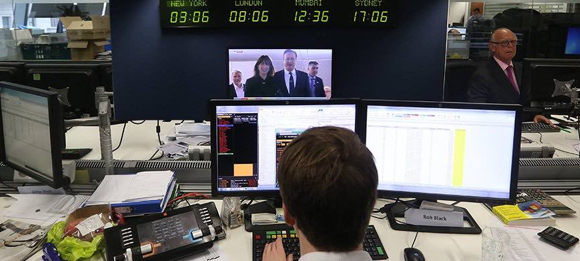How to evaluate the market

Trading is a process that can be broken in 2 stages: market analysis and the trade itself. To the latter we attribute things like opening an order, choosing position size and making sure that your actions conform to the rules of risk management.
This part of the process is very important. However, you shouldn't underestimate the relevance of market analysis as well. In this article, we have gathered recommendations regarding the fundamental and technical analysis of the currency market.
Tip 1. Analysis first, trading second
It often happens that those who only start their trading career form some random trade ideas in their minds and then start looking for the arguments that would justify their thoughts. This is a very wrong approach.
It's the market analysis that should provide you with trade ideas and not the other way round. When you reverse this order, you lose the ability to think objectively. You will interpret everything you see on the charts as confirmations of your initial idea. There's no point in such analysis because it doesn't really prove that this idea was good.
Make sure that when you approach the market you have as clear and free mind as possible. This will allow you to grasp the real profit opportunities.
Tip 2. Confirmations
Once you have the idea, make sure that it's valid. Of course, there's no way to be 100% sure that a trade will bring profit. Yet, it's possible to increase the probability of success. Most trading systems are based on the simple principle: there's a certain sufficient amount of clues you need to gather in order to adopt a trade idea.
Each trader has his/her own view on what "sufficient" is. In our opinion, at least 3 clues are necessary and these clues have to be of different nature, for example, a clue from price action, a clue from a technical indicator and a clue from fundamentals.
Tip 3. Fundamental or technical approach?
There are still a lot of people who like debating which type of analysis is better. At the same time, ask yourself a question: should we really set limitations here? After all, these types of analysis are very different.
The fundamental analysis represents the study of the forces that are driving the market. These drivers become very important when you trade trends. On the other hand, fundamental analysis won't allow you to make precise market entry, while often enough every pip counts. That's where the technical analysis chimes in.
It also offers visual insights in the psychology of market players. For example, a "Head and Shoulders" pattern clearly shows that bulls lose their ability to push the price higher. Many traders recognize this distinctive shape of the price action and act accordingly thus making the pattern a self-fulfilling prophecy.
So, seeing merits in both fundamental and technical analysis, we propose an evident solution: combine the two! You may say that that's too general a recommendation and you will be right.
How about the following scheme: for short-term trades, make your decision based on technical analysis but consult fundamentals in the economic calendar as they can make a big impact on your trade; for longer-term trades, use fundamental analysis to identify a trend to follow and then apply technical analysis to find good entry and exit levels.
Tip 4. Multiple timeframes save the day
Some traders go as far as to perceive timeframes as different trading instruments. Don't make this mistake! Timeframes represent merely a set of lens for different perspectives and allow a trader to get a better look at the market.
Alexander Elder has established a classic approach by introducing a triple screen system that uses 3 timeframes. A trader should start with a bigger timeframe (locate the overall trend), then switch to a smaller one (find the point where a counter-trend move ends) and finally open the smallest timeframe (make a precise entry).
In any case, going from a larger timeframe to a smaller one is the correct approach because otherwise you will risk falling victim of the situation we described in tip #1. So, no matter whether you are a scalper or a position trader, make sure you reap the benefits of analyzing several timeframes.
Tip 5. Remember about correlations
Forex market doesn't exist in the void. Remember that currencies represent just one of the ways for investors to store their funds, for speculators to get profit and for hedgers to protect themselves from big changes in the exchange rates.
As a result, currencies compete with other assets, such as stocks and commodities for public attention. The prices of other instruments are denominated in currencies and this forms yet another tie (that's why gold/oil are so sensitive to the dynamics of the USD).
Finally, currencies are naturally connected to the performance of respective economies. The latter interact as well, so no wonder that problems in China will pressure the AUD: China is Australia's key trading partner.
As a result, it's necessary to have a broad view of the market, follow the general newsflow related to currencies and global economy and be aware of especially strong direct and inverse correlations. Examples of direct correlation: AUD/USD and NZD/USD, XAU/USD and XAG/USD. Example of inverse correlations: EUR/USD and USD/CHF.
All in all, market analysis should be an area of constant improvement for a trader. It's a key skill both to make your own trades or to evaluate the ideas of others. Check Forex news and market commentary at FBS website: we surf through tons of info to serve you the brief and sharp summary of the most important things. Good luck in your market analysis and trading!
This article was submitted by FBS.




